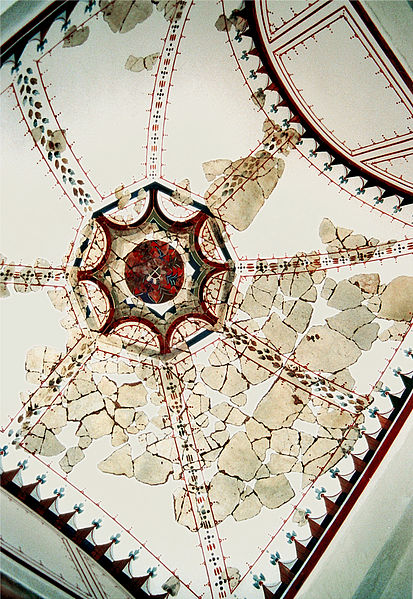A groin vault or groined vault is produced by the intersection at right angles of two barrel vaults. The word "groin" refers to the edge between the intersecting vaults. Sometimes the arches of groin vaults are pointed instead of round. In comparison with a barrel vault, a groin vault provides good economies of material and labor. The thrust is concentrated along the groins or arrises, so the vault need only be abutted at its four corners.
Renaissance groin vault in the church of Santa Maria dei Carmini in Venice
A groin vault (with pointed Gothic profile) viewed from the underside, showing the arris or 'groin'.
Plan of the vault from above showing resultant outward thrust.
Santa Maria Maggiore at Guardiagrele in Abruzzo
A barrel vault, also known as a tunnel vault, wagon vault or wagonhead vault, is an architectural element formed by the extrusion of a single curve along a given distance. The curves are typically circular in shape, lending a semi-cylindrical appearance to the total design. The barrel vault is the simplest form of a vault: effectively a series of arches placed side by side. It is a form of barrel roof.
Coffered ceiling of the barrel-vaulted nave in the Temple of Jupiter at Diocletian's Palace in Split, Croatia. Built early 4th century.
Nave of Lisbon Cathedral with a barrel vaulted soffit. Note the absence of clerestory windows, all of the light being provided by the Rose window at one end of the vault.
The Cloisters, New York City
Roman barrel vault at the villa rustica Bad Neuenahr-Ahrweiler, Germany.








